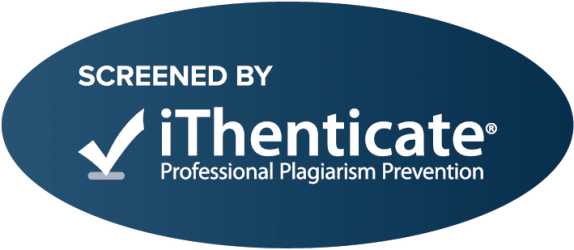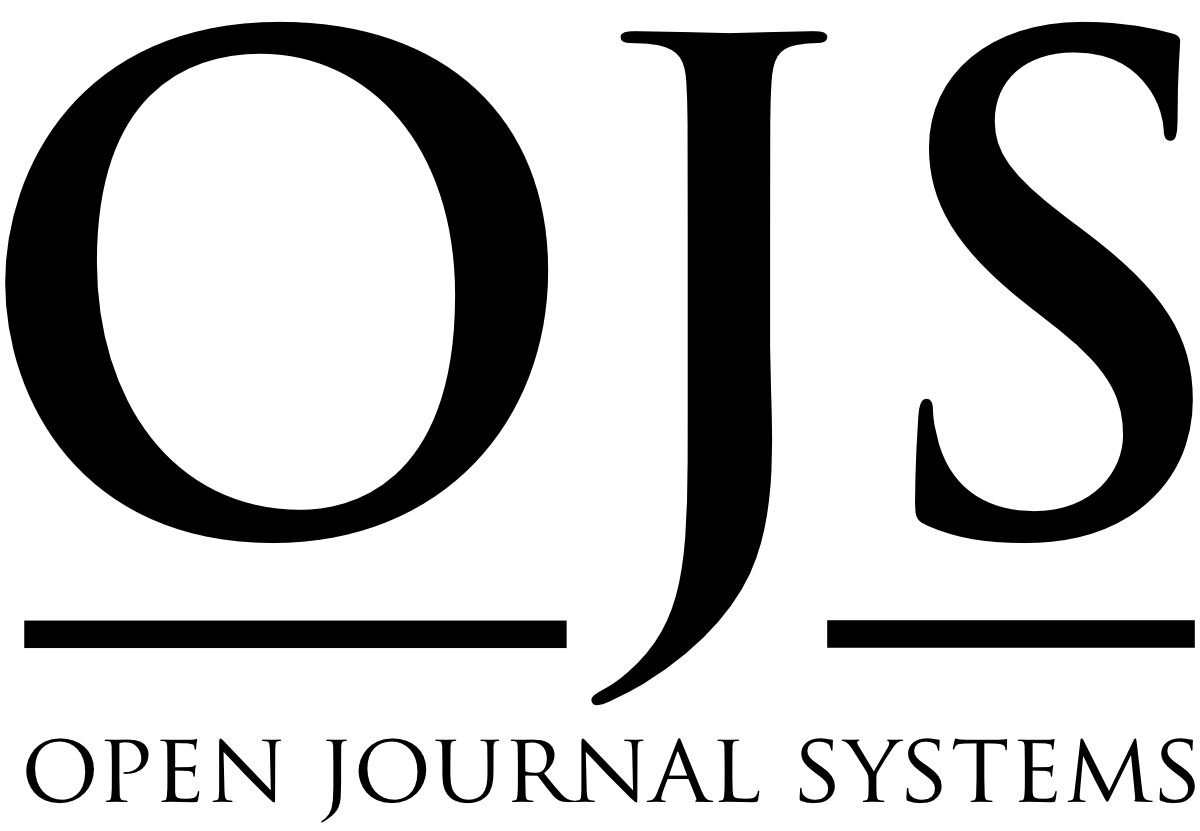The Effect of the Flipped Classroom Model on Students’ Achievement, Problem-Solving Skills and Attitudes towards Physics Lesson
DOI:
https://doi.org/10.52963/PERR_Biruni_V12.N1.18Keywords:
Flipped Classroom, Academic Performance, Attitude Towards the Physics Course, High School StudentsAbstract
The study explored the effects of the Flipped Classroom Model (FCM) application enriched with digital content and educational activities for the physics lesson on students’ academic performance, problem-solving skills, and attitudes towards the physics lesson. The study employed the pretest-posttest control group quasi-experimental design. The study group of this research consists of 121 10th grade students, 59 of whom are experimental and 62 are control. In the study, the subject of "Pressure and Buoyancy" was taught according to the FCM in the experimental groups, while the lessons were carried out in the control groups using methods suitable for the 10th grade Physics Curriculum. Dependent and independent samples t-test analyses were used for the analyses of the pretest and posttest measurement data. The study findings revealed that the academic achievement, physics lesson performance, and attitude scores of the students in the experimental group, in which the FCM was used, were significantly higher than the scores of the students in the control group. No significant difference was found in the problem-solving skills scores between the experimental group students and the control group students.
Downloads
References
Acar, T., & Öğretmen, T. (2012). Analysis of 2006 PISA science performance via multilevel statistical methods]. Education and Science, 37(163), 178-189. http://egitimvebilim.ted.org.tr/index.php/EB/article/view/1040/346
Akgün, M. (2015). The effect of flipped classroom on students' academic achievement and views. [Master's Thesis, Fırat University ]. Council of Higher Education Thesis Center, Turkey.
Alias, M., Iksan, Z. H., Karim, A. A., Nawawi, A. M. H. M., & Nawawi, S. R. M. (2020). A novel approach in problem-solving skills using flipped classroom technique. Creative Education, 11, 38-53. https://doi.org/10.4236/ce.2020.111003
AlJaser, A. M. (2017). Effectiveness of using flipped classroom strategy in academic achievement and self-efficacy among education students of Princess Nourah Bint Abdulrahman University. English Language Teaching, 10(4), 67-77. https://doi.org/10.5539/elt.v10n4p67
Anıl, D., Özer Özkan, Y., & Demir, E. (2015). PISA 2012 Araştırması Ulusal Nihai Rapor. [National Final Report of the PISA 2012 Survey]. TR Ministry of National Education General Directorate of Assessment, Evaluation and Examination Services: Ankara. Retrieved from http://pisa.meb.gov.tr/meb_iys_dosyalar/2020_12/23172540_pisa2012-ulusal-nihai-raporu.pdf
Arnold-Garza, S. (2014). The flipped classroom teaching model and its use for information literacy instruction. Communications in information literacy, 8(1), 9. Retrieved from https://pdxscholar.library.pdx.edu/comminfolit/vol8/iss1/9/
Aydın, B., & Demirer, V. (2022). Are flipped classrooms less stressful and more successful? An experimental study on college students. International Journal of Educational Technology in Higher Education, 19(1), 1-17. https://doi.org/10.1186/s41239-022-00360-8
Bawang, E. G., & Prudente, M. S. (2018). Students’ understanding of physics concepts, attitude, engagement, and perceptions in a flipped classroom environment. Advanced Science Letters, 24(11), 7947-7951. https://doi.org/10.1166/asl.2018.12463
Baytiyeh, H., & Naja, M. K. (2017). Students’ perceptions of the flipped classroom model in an engineering course: a case study. European Journal of Engineering Education, 42(6), 1048-1061. https://doi.org/10.1080/03043797.2016.1252905
Bell, M. R. (2015). An investigation of the impact of a flipped classroom instructional approach on high school students’ content knowledge and attitudes toward the learning environment. [Master’s Thesis, Brigham Young University]. https://scholarsarchive.byu.edu/etd/4444/
Bergmann J & Sams A (2012) Flip your classroom: Reach every student in every class every day. Eugene: ISTE: International Society for Technology in Education.
Butt, A. (2014). Student views on the use of a flipped classroom approach: Evidence from Australia. Business Education & Accreditation, 6(1), 33-43. Retrieved from http://www.theibfr2.com/RePEc/ibf/beaccr/bea-v6n1-2014/BEA-V6N1-2014-4.pdf
Büyüköztürk, Ş., Kılıç Çakmak, E., Akgün, Ö. E., Karadeniz, Ş., & Demirel, F. (2018). Eğitimde bilimsel araştırma yöntemleri. [Scientific research methods in education]. Pegem Academy.
Clark, K. R. (2013). Examining the effects of the flipped model of instruction on student engagement and performance in the secondary mathematics classroom: An action research study. [Doctoral Dissertation, Capella University]. https://www.une.edu/sites/default/files/Exam_Effects_Flipped_Model.pdf
Cole, J. E., & Kritzer, J. B. (2009). Strategies for success: Teaching an online course. Rural Special Education Quarterly, 28(4), 36-40. https://doi.org/10.1177/8756870509028004
Coufal, K. (2014). Flipped learning instructional model: perceptions of video delivery to support engagement in eighth grade math. [Doctoral Dissertation, Lamar University-Beaumont]. https://www.proquest.com/pagepdf/1612629687?accountid=17396
Çepni, S. (2014). Araştırma ve proje çalışmalarına giriş (7. Baskı) [Introduction to research and project studies (7th Edition)]. Celepler Matbaacilik..
Driscoll, M. P. (1994). Psychology of learning for instruction (pp. 341–373). Allyn and Bacon.
Finkenberg, F., and Trefzger, T. (2019) Flipped classroom in secondary school physics education. Journal of Physics: Conference Series, 1286 012015. DOI 10.1088/1742-6596/1286/1/012015
Goszewski, M., Moyer, A., Bazan, Z., & Wagner, D. J. (2013, January). Exploring student difficulties with pressure in a fluid. In Aip conference proceedings (Vol. 1513, No. 1, pp. 154-157). American Institute of Physics. https://doi.org/10.1063/1.4789675
Gross, B., Marinari, M., Hoffman, M., DeSimone, K., & Burke, P. (2015). Flipped@ SBU: Student satisfaction and the college classroom. Educational Research Quarterly, 39(2), 36-52. Retrieved from https://files.eric.ed.gov/fulltext/EJ1166718.pdf
Guerrero, S., Beal, M., Lamb, C., Sonderegger, D., & Baumgartel, D. (2015). Flipping undergraduate finite mathematics: Findings and implications. Primus, 25(9-10), 814-832. https://doi.org/10.1080/10511970.2015.1046003
Howell, D. (2013). Effects of an inverted instructional delivery model on achievement of ninth-grade physical science honors students. [Doctoral Dissertation, Gardner-Webb University]. https://www.proquest.com/docview/1468701492?pq-origsite=gscholar&fromopenview=true
Hurtubise, L., Hall, E., Sheridan, L., & Han, H. (2015). The flipped classroom in medical education: engaging students to build competency. Journal of Medical Education and Curricular Development, 2, JMECD-S23895. https://doi.org/10.4137/JMECD.S23895
Ismail, S. S., & Abdulla, S. A. (2019). Virtual flipped classroom: New teaching model to grant the learners knowledge and motivation. Journal of Technology and Science Education, 9(2), 168-183. http://dx.doi.org/10.3926/jotse.478
Jensen, J. L., Kummer, T. A., & Godoy, P. D. D. M. (2015). Improvements from a flipped classroom may simply be the fruits of active learning. CBE—Life Sciences Education, 14 (1), ar5. https://doi.org/10.1187/cbe.14-08-0129
Kadry, Seifedine, & Abdelkhalak El Hami. (2014). Flipped classroom model in calculus II. Education, 4(4), 103-107. doi:10.5923/j.edu.20140404.04. Retrieved from http://article.sapub.org/10.5923.j.edu.20140404.04.html
Karjanto, N., & Acelajado, M. J. (2022). Sustainable learning, cognitive gains, and improved attitudes in College Algebra flipped classrooms. Sustainability, 14(19), 12500. https://doi.org/10.3390/su141912500
Kazu, İ. Y., & Yalçın, C. K. (2022). A meta-analysis study on the effectiveness of flipped classroom learning on students' academic achievement. E-International Journal of Educational Research, 13(1), 85-102. https://doi.org/10.19160/e-ijer.1033589
Kocakülah, M. S., & Kocakülah, A. (2006, April). Öğrencilerin yapılandırmacı öğrenme kuramına dayalı olarak işlenen fizik dersine yönelik tutumları. [Attitudes of students towards physics lesson taught based on constructivist learning theory]. In 6th International Educational Technology Conference (pp. 19-21).
Koray, A., Çakar, V. &Koray, Ö. (2018). High school students’ opinions about using the flipped classroom ın physics teaching. The Turkish Online Journal of Educational Technology Special Issue for INTE-ITICAM-IDEC Vol.1, 619-624. Retrived from https://www.researchgate.net/publication/330384810_High_School_Students'_Opinions_About_Using_The_Flipped_Classroom_In_Physics_Teaching
Koray, A. (2022). A research on flipped classroom practice in modern physics teaching. Karaelmas Journal of Educational Sciences, 10(2), 264-277. Retrieved from https://dergipark.org.tr/en/pub/kebd/issue/74811/1210566
Korkmaz, H. (2002). The effects of project based learning on creative thinking ability, problem solving ability and level of academic risk taking in science education. [Doctoral Dissertation, Hacettepe University]. Council of Higher Education Thesis Center, Turkey.
Lai, C.-L., & Hwang, G.-J. (2016). A self-regulated flipped classroom approach to improving students' learning performance in a mathematics course. Computers & Education, 100, 126–140. https://doi.org/10.1016/j.compedu.2016.05.006
Leo, J. & Puzio, K. (2016). Flipped instruction in a high school science classroom. J. Sci. Educ. Technol., 25, 775–781. https://doi.org/10.1007/s10956-016-9634-4
Limueco, J. M., & Prudente, M. S. (2018). Flipping classroom to improve physics teaching. Advanced Science Letters, 24(11), 8292-8296. https://doi.org/10.1166/asl.2018.12544
Lin, Y. T. (2019). Impacts of a flipped classroom with a smart learning diagnosis system on students' learning performance, perception, and problem solving ability in a software engineering course. Computers in Human Behavior, 95, 187-196. https://doi.org/10.1016/j.chb.2018.11.036
Long, T., Logan, J., & Waugh, M. (2016). Students’ perceptions of the value of using videos as a pre-class learning experience in the flipped classroom. TechTrends, 60(3), 245-252. https://doi.org/10.1007/s11528-016-0045-4
Love, B., Hodge, A., Grandgenett, N., & Swift, A. W. (2014). Student learning and perceptions in a flipped linear algebra course. International Journal of Mathematical Education in Science and Technology, 45(3), 317-324. https://doi.org/10.1080/0020739X.2013.822582
Loverude, M. E., Kautz, C. H., & Heron, P. R. (2003). Helping students develop an understanding of Archimedes’ principle. I. Research on student understanding. American Journal of Physics, 71(11), 1178-1187. https://doi.org/10.1119/1.1607335
Odabaşı, F. (1997). Eğitimde sistem yaklaşımı ve eğitim teknolojisi. [System approach in education and educational technology]. Education and Science, 21(106). Retrieved from http://213.14.10.181/index.php/EB/article/view/5948/2070
Osguthorpe, R. T., & Graham, C. R. (2003). Blended learning environments: Definitions and directions. Quarterly review of distance education, 4(3), 227-33. Retrieved from https://www.learntechlib.org/p/97576/.
Overmyer, G. R. (2014). The flipped classroom model for college algebra: Effects on student achievement [Doctoral dissertation], Colorado State University. https://www.proquest.com/docview/1615100148?pq-origsite=gscholar&fromopenview=true
Razali, N. M., & Wah, Y. B. (2011). Power comparisons of Shapiro-wilk, Kolmogorov-smirnov, Lilliefors and Anderson-darling tests. Journal of statistical modeling and analytics, 2(1), 21-33. Retrieved from http://www.de.ufpb.br/~ulisses/disciplinas/normality_tests_comparison.pdf
Roadrangka, V., Yeany, R.H., & Padilla, M.J. (1982). GALT, group test of logical thinking. Georgia: University of Georgia.
S. Khan, in TED Talks (2011), Retrieved from TED website: http://www.ted.com/talks/salman_khan_let_s_use_video_to_reinvent_education.html
Setren, E., Greenberg, K., Moore, O., & Yankovich, M. (2021). Effects of Flipped Classroom Instruction: Evidence from a Randomized Trial. Education Finance and Policy, 16(3), 363-387. https://doi.org/10.1162/edfp_a_00314
Smallhorn, M. (2017). The flipped classroom: A learning model to increase student engagement not academic achievement. Student Success, 8(2), 43-53. https://search.informit.org/doi/10.3316/informit.593366988343831
Sönmez, V., & Alacapınar, F. G. (2011). Örneklendirilmis bilimsel araştırma yontemleri. [Scientific research methods with examples]. Anı Yayıncılık.
Steen-Utheim, A. T., & Foldnes, N. (2018). A qualitative investigation of student engagement in a flipped classroom. Teaching in Higher Education, 23(3), 307-324. https://doi.org/10.1080/13562517.2017.1379481
Strelan, P., Osborn, A., & Palmer, E. (2020). The flipped classroom: A meta-analysis of effects on student performance across disciplines and education levels. Educational Research Review, 30, 100314. https://doi.org/10.1016/j.edurev.2020.100314
Tune J.D., Sturek M. and Basile D.P. (2013) Flipped classroom model improves graduate student performance in cardiovascular, respiratory, and renal physiology. Adv Physiol Educ. 37 (4), 316–20. https://doi.org/10.1152/advan.00091.2013
Uşun, S. (2000). Özel öğretim teknolojileri ve materyal geliştirme. [Special instructional technologies and material development]. PegemA Pub.
Weaver, G. C., & Sturtevant, H. G. (2015). Design, implementation, and evaluation of a flipped format general chemistry course. Journal of Chemical Education, 92(9), 1437-1448. https://doi.org/10.1021/acs.jchemed.5b00316
Wiginton, B. L. (2013). Flipped instruction: An investigation into the effect of learning environment on student self-efficacy, learning style, and academic achievement in an algebra I classroom. [Unpublished doctoral dissertation]. University of Alabama, Tuscaloosa, AL. https://ir.ua.edu/bitstream/handle/123456789/1881/file_1.pdf?sequence=1&isAllowed=y
Yestrebsky, C. L. (2015). Flipping the classroom in a large chemistry class-research university environment. Procedia-Social and Behavioral Sciences, 191, 1113-1118. https://doi.org/10.1016/j.sbspro.2015.04.370
Yurtlu, S. (2018). Effect of the flipped classroom model on students’ achievement and views in science education. [Master's thesis, Muş Alparslan University]. Council of Higher Education Thesis Center, Turkey.
Zappe, S., Leicht, R., Messner, J., Litzinger, T., & Lee, H. W. (2009, June). “Flipping” the classroom to explore active learning in a large undergraduate course. In 2009 Annual Conference & Exposition (pp. 14-1385). Retrieved from https://peer.asee.org/4545
Additional Files
Published
How to Cite
Issue
Section
License
Copyright (c) 2023 Psycho-Educational Research Reviews

This work is licensed under a Creative Commons Attribution-NonCommercial-NoDerivatives 4.0 International License.










